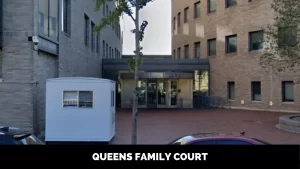How to Get a Family Court Case Dismissed
Getting a family court case dismissed can be tricky, but is possible under the right circumstances. Here’s an overview of how to get a family court case thrown out.
What is a Family Court Case?
Family court handles legal matters involving family relationships, such as divorce, child custody, child support, and domestic violence. The types of cases heard in family court are governed by state law. Common family court cases include divorce, annulment, legal separation, paternity, child custody and visitation, child support, spousal support, and domestic violence restraining orders.
Reasons to Get a Family Court Case Dismissed
There are several reasons why someone might want to get a family court case dismissed, including:
- The court lacks jurisdiction over the case
- The complaint fails to adequately state a legal claim
- The plaintiff lacks legal standing to bring the case
- The case has procedural defects like missed deadlines
- The defendant believes the claims are frivolous or unsubstantiated
- The parties have reconciled or resolved the issues out of court
Grounds for Dismissal
There are several legal grounds on which a family court case can potentially be dismissed. The main ones are lack of jurisdiction, failure to state a claim, and lack of standing.
Lack of Jurisdiction
If the court does not have power to hear the case, it must dismiss it. There are two main jurisdictional problems:
Subject Matter Jurisdiction
The court must have authority under state law to hear the type of case. For example, a divorce petition filed in small claims court would face dismissal.
Personal Jurisdiction
The court must have power over the parties involved. There is no personal jurisdiction if the defendant has no ties to the state or was not properly served.
Failure to State a Claim
Even if the court has jurisdiction, the complaint can be dismissed if it fails to allege facts that — if proven true — would entitle the plaintiff to relief under the law. For instance:
Failing to Allege Essential Facts
Not including important details like dates, actions, or statements.
Requesting a Remedy the Court Cannot Provide
Asking for a form of relief the court has no power to grant.
Lack of Standing
If the plaintiff lacks a sufficient stake in the case, they have no standing to bring a claim. This could happen:
Plaintiff is Not the Real Party of Interest
Someone other than the named plaintiff is the one who suffered damages.
No Injury Caused by Defendant
The plaintiff’s alleged injury is not fairly traceable to the defendant’s actions.
Procedural Reasons for Dismissal
Even if the case meets jurisdictional and pleading standards, procedural defects can still get it tossed out.
Failure to Prosecute
Not diligently pursuing the case — like not showing up to hearings or not complying with orders — can lead to dismissal.
Failure to Comply with Rules
Judges will dismiss cases when parties don’t follow proper procedures. Common reasons include:
Discovery Abuse
Not cooperating with the evidence-gathering process.
Failure to Meet Deadlines
Missing court-ordered filing deadlines or ignoring scheduling orders.
Strategies for Getting a Dismissal
If you want a family court case against you dismissed, here are some effective approaches:
File a Motion to Dismiss
Draft a formal request outlining the legal and factual reasons the case should be dismissed. Cite supporting statutes and case law.
Challenge Jurisdiction
Argue the court lacks power over the subject matter or parties in a motion to dismiss or response.
Highlight Pleading Deficiencies
Use a demurrer or motion to dismiss to point out how the complaint is vague or fails to state actionable claims.
Show Lack of Injury or Standing
File a motion disputing that the plaintiff suffered cognizable damages from the defendant’s actions.
Conclusion
While challenging, it is possible to get a family court case thrown out under the right circumstances. The keys are leveraging dismissal grounds like lack of jurisdiction or standing, exposing pleading flaws, and capitalizing on procedural defects. With strong legal arguments and strategic motions, you may be able to successfully convince the judge to dismiss the claims.
FAQs
Q: What is the first step in getting a case dismissed?
A: The first step is generally to file a motion to dismiss specifying the legal and factual grounds for dismissal. This puts the arguments before the court.
Q: How long does it typically take to get a ruling on dismissal?
A: It normally takes a few weeks to a few months to get a ruling after filing a motion to dismiss. The judge must review legal arguments from both sides.
Q: Can I get a case dismissed if it was filed in the wrong court?
A: Yes, lack of subject matter jurisdiction is grounds for dismissal. You would need to show the case should have been filed in a different court.
Q: What happens if the judge grants a motion to dismiss?
A: If granted, the case would be dismissed and could not be refiled unless the defects are cured. Any court orders would be void.
Q: Can a case be dismissed due to lack of evidence?
A: Not generally. Dismissal is based on defects in the pleadings rather than sufficiency of evidence, which is decided at summary judgment or trial.







